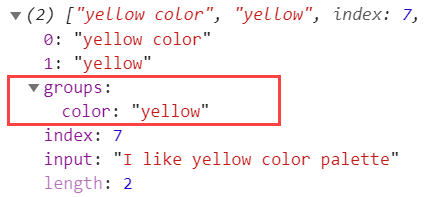Summary: in this tutorial, you’ll learn about the JavaScript String match() method to match a string against a regular expression.
To understand how the match() method works and how to use it effectively, you should have the basic knowledge of regular expression.
Introduction to the JavaScript match() method
The String match() method matches a string against a regular expression:
str.match(regexp);
Code language: JavaScript (javascript)If the regexp is not a regular expression, the match() will convert it to a regular expression using the RegExp() constructor. The match() returns an array depending on whether the regular expression uses the global flag (g) flag or not:
- If the
regexpuses thegflag, thenmatch()method returns an array containing all the matches. The result does not contain the capturing groups. - If the
regexpdoesn’t use thegflag, thematch()method will return the first match and its related capturing groups. The result of the match is the same result asRegExp.exec()with additional properties. See the example below for the details.
The match() returns null if it does not find any matches.
JavaScript Regex match() method
Let’s take some examples of using the match() method.
1) Using the JavaScript regex match() method with the expression that has the global flag
The following example shows how to use the match() method with the global flag (g). It returns an array of matches:
let str = "Price: $5–$10";
let result = str.match(/\$\d+/g);
console.log(result);
Code language: JavaScript (javascript)Output:
["$5", "$10"]
Code language: JavaScript (javascript)In this example, the match() searches for any number that follows the $ sign.
2) Using the JavaScript regex match() method with the expression that has the global flag
The following example illustrates how to use the match() method with a regular expression that doesn’t have a global flag. It returns an array of the first match with additional properties.
let str = "Price: $5–$10";
let result = str.match(/\$\d+/);
console.log(result);
Code language: JavaScript (javascript)Output:

The additional properties are:
index: is the index at which the match was found.input: a copy of the search string.groups: is the object of named capturing groups whose keys and values are the names and the capturing groups respectively. In this example, it isundefinedbecause we did to define any named capturing groups.
3) Using the JavaScript Regex match() method with the named capturing group
The following shows how to use the match() method with a named capturing group. It captures the "yellow" into a group named "color":
let str = 'I like yellow color palette!';
let re = /(?<color>yellow) color/;
let result = str.match(re);
console.log(result);
Code language: JavaScript (javascript)Output:

In this tutorial, you have learned how to use the JavaScript String match() method to match a string against a regular expression.